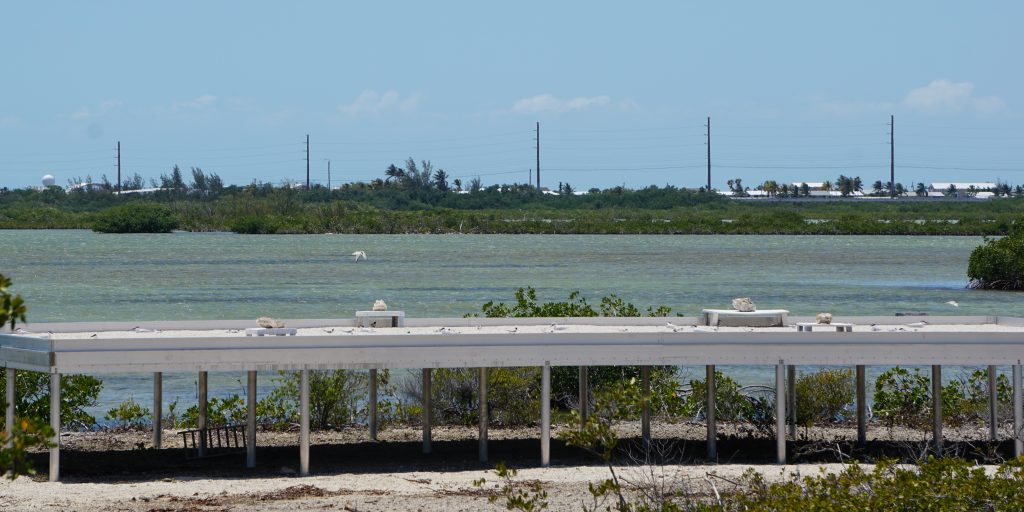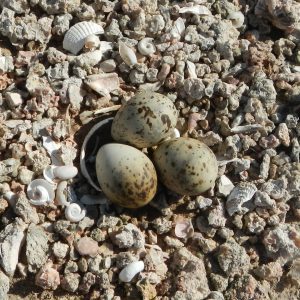
Tuesday, August 27, 2024
By: Jori Rzepecki
As coastal development threatens natural habitats, an unlikely ally for endangered seabirds has emerged: gravel rooftops. University of Florida landscape architecture student Megan Laffey dedicated her summer to exploring this connection through an internship with the Florida Fish and Wildlife Commission (FWC) and American Bird Conservancy (ABC).
Laffey’s research focused on three threatened species: Least Terns, Black Skimmers, and Roseate Terns. These seabirds, pushed from their traditional coastal nesting grounds, have increasingly turned to gravel roofs as alternative breeding sites since the mid-1900s.
“Florida’s growth along its coastlines has led to the development or disturbance of suitable habitat ground, placing stress upon these species,” Laffey explained. “Gravel roofs have become an unexpected sanctuary.”

However, this man-made habitat is also under threat. Gravel roofs are falling out of favor due to energy efficiency concerns, increased maintenance costs, and potential health risks associated with asphalt construction.
The 11-week internship, running from May 29 to August 14, saw Laffey dive deep into the complexities of this issue. Her work involved extensive background research, interviews with a diverse range of professionals, and field visits to assess current rooftop conditions.
“I consulted with biologists, ecologists, roofing contractors, material specialists, architects, insurance agents, and fellow landscape architects,” Laffey said. “Understanding the full scope of the problem requires insights from multiple disciplines.”
As the sole undergraduate on the project, Laffey was supervised by a team of advisors, including Jules Bruck, Director of UF’s School of Landscape Architecture and Planning, Dani Tabilo from the FWC, and Sea McKeon from the ABC.
The internship took an unexpected turn when Laffey’s research revealed that preserving existing gravel roofs was not a viable long-term solution. This realization prompted a shift in focus towards developing alternative habitat solutions.

“I began looking at current roof safety measures for both birds and humans,” Laffey said. “I also studied successful case studies from Maryland and applied the skills I’ve gained through my landscape architecture program to design suggestions for various scenarios.”
The culmination of Laffey’s work is a comprehensive report for the FWC and ABC. It includes a decision-making model to guide property owners in establishing or enhancing seabird habitats. The organizations hope this information will inspire commercial property owners and large corporations to create new spaces for displaced seabirds.
“This set of guidelines could be used in design charrettes to generate more ideas, working towards a sustainable habitat solution for seabirds not only in Florida, but across the nation,” Laffey noted.
The internship’s mostly remote format allowed Laffey to conduct research and do any travel when necessary. Weekly meetings and consistent communication with Bruck, her supervisor, provided valuable guidance and creative collaboration.
“Jules provided valuable guidance and creative collaboration through weekly meetings and consistent communication, encouraging my vision, and building my confidence as a role model and dedicated support system,” Laffey said.
Reflecting on her experience, Laffey emphasized the broader lessons learned. “I gained extensive knowledge about the complications that result from human actions in our natural world and how difficult habitat remediation, or replacement can be,” she said. “I also learned about the structure of roofs and their requirements to fit building codes and be insured.”
The internship has implications beyond Laffey’s academic career. Her report could influence future conservation efforts, potentially increasing available habitats for seabirds and strengthening their populations.

As coastal development continues to threaten natural habitats, innovative solutions like those explored in Laffey’s research may prove crucial for the survival of endangered seabird species. Her work underscores the importance of interdisciplinary approaches to complex environmental challenges.
“I’m proud to be producing a final report that may have long-term implications,” Laffey concluded. “I hope this work contributes to conserving and strengthening our natural world.”